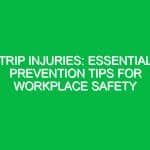Introduction
In today’s fast-paced industrial Environment, the importance of Health, Safety, and Environment (HSE) management cannot be overstated. One of the cornerstones of effective HSE management is the concept of risk control process steps. These steps not only help organizations comply with Regulations but also play an essential role in safeguarding employees, the community, and the environment. Understanding and implementing these steps can significantly mitigate risks and contribute to overall operational success.
Risk control process steps encompass a series of actions designed to identify, assess, and mitigate risks associated with various activities and processes. The ultimate goal is to create a safe and healthy working environment while minimizing environmental impact. This article will delve deep into the critical risk control process steps, offering a comprehensive exploration tailored for the HSE context.
The Risk Control Process Steps
1. Risk Identification
The first step in the risk control process involves identifying potential Hazards that could pose risks to health, safety, or the environment. This task requires a thorough understanding of the workplace, operations, and the materials used. Various techniques can be employed during this phase, including:
- Workplace inspections
- Job Hazard Analysis (JHA)
- Employee feedback
- Review of past incidents and near-misses
For instance, in a manufacturing facility, risk identification might reveal that the machinery poses a risk of injury if proper guarding is not in place. Identifying this risk early allows for timely intervention.
2. Risk Assessment
Once risks are identified, the next step is to assess their potential impact and likelihood of occurrence. This involves evaluating how severe the consequences could be if the risk materializes. Risk assessment can be qualitative or quantitative, depending on the organization’s needs and resources.
In a qualitative assessment, teams might categorize risks as low, medium, or high based on their potential impact. Quantitative assessments, on the other hand, might involve statistical analyses to calculate the probability of a risk occurring and its potential costs. For instance, if an assessment reveals that a chemical spill could cause significant harm to workers and the environment, it may be classified as a high-risk scenario.
3. Risk Control Measures
After assessing the risks, organizations must implement Control Measures to mitigate them. These measures can be categorized into three main types:
- Elimination: Removing the hazard completely.
- Substitution: Replacing the hazard with something less dangerous.
- Engineering Controls: Implementing physical changes to reduce exposure.
For example, if a specific chemical is identified as a risk, elimination might involve discontinuing its use altogether, while substitution could mean replacing it with a safer alternative. Engineering controls could involve installing ventilation systems to reduce airborne exposure.
4. Implementation of Control Measures
Once the appropriate control measures are identified, the next step is implementation. This may require Training employees on new Procedures, updating Safety protocols, or investing in new equipment. Clear communication is vital during this phase to ensure that everyone understands their roles and responsibilities.
Consider a construction site where new Safety Gear is introduced. Workers must be trained not only on how to use the gear but also on why it is crucial for their Safety. This education fosters a culture of safety, encouraging employees to take responsibility for their well-being.
5. Monitoring and Review
The risk control process does not end with implementation. Continuous monitoring and review are essential to ensure that control measures remain effective over time. Organizations should regularly evaluate the effectiveness of their risk control strategies and be open to making adjustments as needed.
For example, if a newly implemented safety protocol is not reducing incidents as expected, it may require a review to identify gaps in training or communication. Regular audits and feedback loops can help maintain high safety Standards and ensure compliance with HSE regulations.
6. Documentation and Reporting
Documentation is a critical aspect of the risk control process. Keeping detailed records of risk assessments, control measures, training sessions, and incident reports not only supports compliance with regulations but also enhances organizational learning. Effective documentation helps identify trends and areas for improvement.
For instance, if an organization notices a pattern of incidents related to a specific task, this information can inform future risk assessments and control measures, fostering a proactive approach to safety.
7. Employee Involvement and Communication
Involving employees in the risk control process is essential for its success. Employees often have firsthand knowledge of the risks they face and can provide valuable insights into effective control measures. Encouraging open communication creates a culture of safety and empowers individuals to take an active role in their own protection.
For example, a manufacturing company might establish a safety committee made up of workers from various levels. This committee can regularly meet to discuss safety concerns, review incidents, and suggest improvements, creating a collaborative environment focused on health and safety.
Real-Life Example: Case Study of Successful Risk Control
To illustrate the importance of these risk control process steps, consider the case of a large oil and gas company that faced significant challenges related to worker safety and environmental impact. After conducting a thorough risk assessment, the company identified several high-risk areas, including equipment Maintenance and chemical handling.
In response, they implemented a series of risk control measures, including:
- Enhanced training programs focused on equipment safety.
- Regular audits of maintenance practices.
- Investment in advanced monitoring technology to detect leaks.
Over the next year, the company saw a dramatic reduction in incidents related to equipment failure and chemical spills. This success not only improved their safety record but also enhanced their reputation as a responsible corporate citizen.
Regulations and Standards Impacting Risk Control
Various regulations and standards govern the risk control process within the HSE context. Compliance with these regulations is not only a legal obligation but also a fundamental aspect of effective risk management. Key regulations include:
- The Occupational Safety and Health Administration (OSHA) standards in the United States, which mandate hazard assessments and control measures.
- The Environmental Protection Agency (EPA) regulations, which require organizations to manage hazardous substances responsibly.
- International Organization for Standardization (ISO) standards, such as ISO 45001 for Occupational Health and safety management systems.
These regulations establish a framework for organizations to develop and implement effective risk control process steps. Understanding and adhering to these standards is crucial for maintaining compliance and fostering a culture of safety.
Conclusion
Unlocking critical risk control process steps is essential for achieving HSE success. By systematically identifying, assessing, and controlling risks, organizations can create safer workplaces, protect employees, and minimize environmental impact. The integration of employee involvement, continuous monitoring, and adherence to regulations further strengthens the effectiveness of the risk control process.
In an era where safety and Sustainability are paramount, organizations must prioritize these steps to not only comply with legal requirements but also to foster a culture of safety that resonates throughout the workforce. As the landscape of work continues to evolve, adapting risk control process steps will remain a vital component in the pursuit of health, safety, and environmental excellence.


